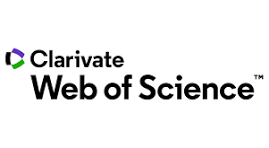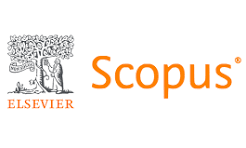INTENSIVE CARE UNIT MANAGEMENT OF SARS-COV-2 PATIENTS: A NARRATIVE REVIEW
Abstract
Keywords
Full Text:
PDFReferences
Huang C, Wang Y, Li X, Ren L, Zhao J, Hu Y, et al. Clinical features of patients infected with 2019 novel coronavirus in Wuhan, China. Lancet 2020 Feb 15;395 (10223):497-506. https://doi.org/10.1016/S0140-6736(20)30183-5
Ai T, Yang Z, Hou H, Zhan C, Chen C, Lv W, et al. Correlation of chest CT and RT-PCR testing in coronavirus disease 2019 (COVID-19) in China: a report of 1014 cases. J Radiol 2020 Feb 26:200642. https://doi.org/10.1148/radiol.2020200642
Shi H, Han X, Jiang N, Cao Y, Alwalid O, Gu J, et al. Radiological findings from 81 patients with COVID-19 pneumonia in Wuhan, China: a descriptive study. Lancet infect Dis 2020 Apr 1;20(4):425-34. https://doi.org/10.1016/S1473-3099(20)30086-4
Hassan T, Khan MS, Saeed S. How Pakistan is combating COVID-19 pandemic?. J Liaquat Uni Med Health Sci 2021 Jun 29;20(2):81-2.
Guan WJ, Ni ZY, Hu Y, Liang WH, Ou CQ, He JX, et al. Clinical characteristics of coronavirus disease 2019 in China. New Eng J Med 2020 Apr 30;382(18):1708-20. https://doi.org/10.1056/NEJMoa2002032
Wang D, Hu B, Hu C, Zhu F, Liu X, Zhang J, et al. Clinical characteristics of 138 hospitalized patients with 2019 novel coronavirus-infected pneumonia in Wuhan, China. JAMA 2020 Mar 17;323(11):1061-9. https://doi.org/10.1001/jama.2020.1585
Liu KC, Xu P, Lv WF, Qiu XH, Yao JL, Jin-Feng G. CT manifestations of coronavirus disease-2019: a retrospective analysis of 73 cases by disease severity. Eur J Radiol 2020 Mar 12:108941. https://doi.org/10.1016/j.ejrad.2020.108941
Arentz M, Yim E, Klaff L, Lokhandwala S, Riedo FX, Chong M, et al. Characteristics and outcomes of 21 critically ill patients with COVID-19 in Washington State. JAMA 2020 Apr 28;323(16):1612-4. https://doi.org/10.1001/jama.2020.4326
Han W, Quan B, Guo Y, Zhang J, Lu Y, Feng G, et al. The course of clinical diagnosis and treatment of a case infected with coronavirus disease 2019. J Med Virol 2020 May;92(5):461-3. https://doi.org/10.1002/jmv.25711
Thomas-Rüddel D, Winning J, Dickmann P, Ouart D, Kortgen A, Janssens U, et al. Coronavirus disease 2019 (COVID-19): update for anesthesiologists and intensivists March 2020. Der Anesthetist 2020 Mar 24;45(1):3-9. https://doi.org/10.1007/s00101-020-00760-3
Siddiqi HK, Mehra MR. COVID-19 illness in native and immunosuppressed states: A clinical-therapeutic staging proposal. J Heart Lung Transplant 2020 May;39(5):405-11. https://doi.org/10.1016/j.healun.2020.03.012
Chen L, Xiong J, Bao L, Shi Y. Convalescent plasma as a potential therapy for COVID-19. Lancet Infect Dis 2020 Apr 1;20(4):398-400. https://doi.org/10.1016/S1473-3099(20)30141-9
Sanders JM, Monogue ML, Jodlowski TZ, Cutrell J-B. Pharmacologic treatments for coronavirus disease 2019 (COVID-19): a review. JAMA 2020 May 12; 323(18):1824-36. https://doi.org/10.1001/jama.2020.6019
Rizk JG, Kalantar-Zadeh K, Mehra MR, Lavie CJ, Rizk Y, Forthal DN. Pharmaco-immunomodulatory therapy in COVID-19. Drugs 2020 Jul 21:1-26. https://doi.org/10.1016/j.drudis.2020.11.025
Mangalmurti NS, Reilly JP, Cines DB, Meyer NJ, Hunter CA, Vaughan AE. COVID-19-associated acute respiratory distress syndrome clarified: a vascular endotype?. Am J Respir Crit Care Med 2020 Sep 1;2020(5):750-3. https://doi.org/10.1164/rccm.202006-2598LE
Grasselli G, Tonetti T, Protti A, Langer T, Girardis M, Bellani G, et al. Pathophysiology of COVID-19-associated acute respiratory distress syndrome: a multicentre prospective observational study. Lancet Respir Med 2020 Aug 27;201(12):1324-31. https://doi.org/10.1016/S2213-2600(20)30370-2
Pan C, Chen L, Lu C, Zhang W, Xia JA, Sklar MC, et al. Lung recruitability in COVID-19-associated acute respiratory distress syndrome: a single-center observational study. Am J Respir Crit Care Med 2020 May 15;201(10):1294-7. https://doi.org/10.1164/rccm.202003-0527LE
Fan E, Beitler JR, Brochard L, Calfee CS, Ferguson ND, Slutsky AS, et al. COVID-19-associated acute respiratory distress syndrome: is a different approach to management warranted?. Lancet Respir Med 2020 Aug;8(8):816-21. https://doi.org/10.1016/S2213-2600(20)30304-0
Sardesai I, Grover J, Garg M, Nanayakkara PW, Di Somma S, Paladino L, et al. Short-term home oxygen therapy for COVID-19 patients: The COVID-HOT algorithm. Fam Med Prim Care Rev 2020 Jul;9(7):3209. https://doi.org/10.4103/jfmpc.jfmpc_1044_20
Thompson AE, Ranard BL, Wei Y, Jelic S. Prone positioning in awake, nonintubated patients with COVID-19 hypoxemic respiratory failure. JAMA Intern Med 2020 Nov 1;180(11):1537-39. https://doi.org/10.1001/jamainternmed.2020.3030
Caputo ND, Strayer RJ, Levitan R. Early self-proning in awake, non-intubated patients in the emergency department: a single ED's experience during the COVID-19 pandemic. Acad Emerg Med 2020 May;27(5):375-8. https://doi.org/10.1111/acem.13994
Cohen D, Wasserstrum Y, Segev A, Avaky C, Negru L, Turpashvili N, et al. Beneficial effect of awake prone position in hypoxemic patients with COVID-19: case reports and literature review. Intern Med J 2020 Aug;50(8):997-1000. https://doi.org/10.1111/imj.14926
Xu Q, Wang T, Qin X, Jie Y, Zha L, Lu W. Early awake prone position combined with high-flow nasal oxygen therapy in severe COVID-19: a case series. Crit Care 2020 Dec;24(1):1-3. https://doi.org/10.1186/s13054-020-02991-7
Wang K, Zhao W, Li J, Shu W, Duan J. The experience of high-flow nasal cannula in hospitalized patients with 2019 novel coronavirus-infected pneumonia in two hospitals of Chongqing, China. Ann Intensive Care 2020 Dec;10;(11):656-62. https://doi.org/10.1186/s13613-020-00653-z
Xia JG, Zhao JP, Cheng ZS, Hu Y, Duan J, Zhan QY. Non-invasive respiratory support for patients with novel coronavirus pneumonia: clinical efficacy and reduction in risk of infection transmission. Chin Med J 2020 May 5;133(9):1109-11. https://doi.org/10.1097/CM9.0000000000000761
DOI: https://doi.org/10.46903/gjms/19.04.1024
Refbacks
- There are currently no refbacks.
Copyright (c) 2021 Taimoor Hassan, Sana Saeed, Sidra Naseem, Fiza Saleem

This work is licensed under a Creative Commons Attribution-NonCommercial 4.0 International License.

Gomal Medical College, Daraban Road, Dera Ismail Khan, Pakistan
ISSN: 1819-7973, e-ISSN: 1997-2067
Website: https://www.gmcdikhan.edu.pk
Phone: +92-966-747373



